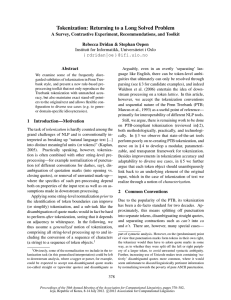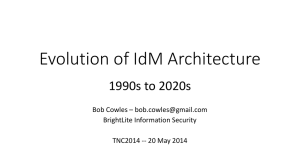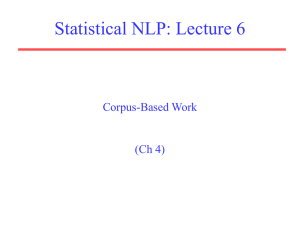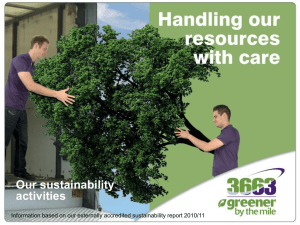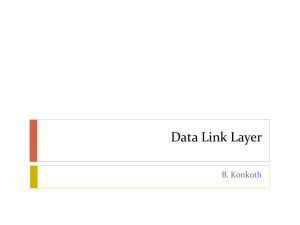here
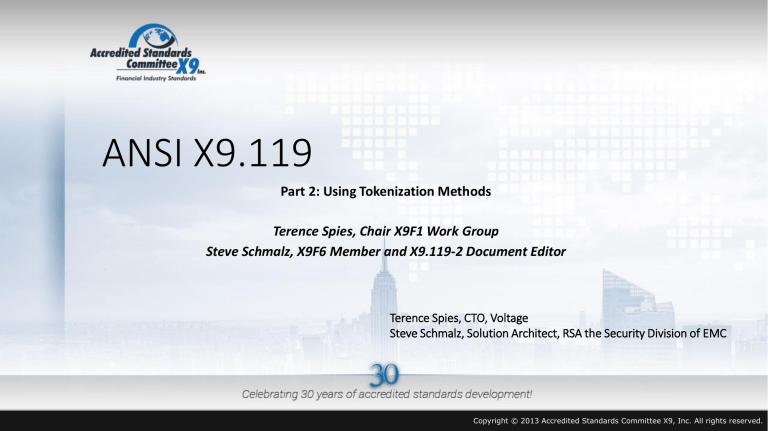
.
ANSI X9.119
Part 2: Using Tokenization Methods
Terence Spies, Chair X9F1 Work Group
Steve Schmalz, X9F6 Member and X9.119-2 Document Editor
Terence Spies, CTO, Voltage
Steve Schmalz, Solution Architect, RSA the Security Division of EMC
Copyright © 2013 Accredited Standards Committee X9, Inc. All rights reserved.
Agenda
• Introduction – a short history of X9.119
• So what is a token?
• Tokenization use-cases
• So what is tokenization?
• The tokenization model
• Generic attacks on tokenization systems
• Derived requirements
• The hardware question
• A call for help from the community
Copyright © 2013 Accredited Standards Committee X9, Inc. All rights reserved.
What is X9 and X9 F1, F4 and F6?
• X9 develops financial industry technical standards and guidelines.
• X9F is the “Data & Information Security Subcommittee”
• X9F1 is the working group that deals with “Cryptographic Tools”
• Terence Spies is the present chair.
• They plan on developing a standard covering Tokenization Algorithms.
• X9F4 focuses on “Cryptographic Protocol and Application Security”
• Jeff Stapleton is the present chair.
• X9F6 works on “Cardholder Authentication and ICC’s (Integrated Chip
Cards)”
• Scott Spiker is the current chair.
• X9.119 is being written here.
Copyright © 2013 Accredited Standards Committee X9, Inc. All rights reserved.
X9.119
• X9.119 started as a single document aimed at addressing both encryption and tokenization methods for protecting sensitive payment card data. First real work started in early 2009.
• Over the next couple of years several issues stalled work on the standard
• The requirement for strong hardware to implement any cryptographic processes.
• The definition of tokenization.
• In early 2012 F6 decided to divide the document into two parts. Part 1 covered encryption and was approved in March of last year after which F6 began work on part 2, tokenization.
Copyright © 2013 Accredited Standards Committee X9, Inc. All rights reserved.
Definition of a Token
• Token – A surrogate value used in place of an underlying sensitive value (USV) in certain, well defined situations, but not in every way that the USV is used.
• Tokens have attributes and utility.
• Token attribute – the structure of the token
• Token utility – what you can do with the token
Copyright © 2013 Accredited Standards Committee X9, Inc. All rights reserved.
Examples of Tokens
PAN Token
13980 826539 1255 231poK983HKzns100
84295 195562 7629
91094 389921 9321
12345 098765 6574
T3245 918234 4251
Comment
Token is composed of alphabetic and numeric characters
Token is identical to PAN in structure and character set (LUN check could even hold)
Token is almost identical to PAN except for a character indicating it is a token
Copyright © 2013 Accredited Standards Committee X9, Inc. All rights reserved.
Token Utility
• X9.119’s concept of utility is similar to PCI’s concept of a high value token.
• The utility of a token replacing a PAN can run the scale from
• a simple unique value mapped to the underlying sensitive value
• to a value that can be used to approve certain financial transactions
• X9.119 focuses on tokens with minimal utility.
Copyright © 2013 Accredited Standards Committee X9, Inc. All rights reserved.
Tokenization Use-Cases
• Main business drivers from the perspective of why tokenization versus encryption.
• Reduced auditing costs (reducing PCI auditing scope)
• Reduced impact on workflow (a PAN token does not require a new database schema)
• Use of tokenization in payment processing
• At the Acquirer
• At the Merchant
Copyright © 2013 Accredited Standards Committee X9, Inc. All rights reserved.
DB
Token
A Simple Payment Processing Workflow
Token
Merchant
S
W
I
T
C
H
Token
DB
Token
Token
DB
Token
Acquirer
Vertical Specific
Middleware
Vertical Specific
Middleware
Vertical Specific
Middleware TC
Tokenization
Service
Token E
R
I
D
O
V
P
R
U
E
R
S
I
S
Copyright © 2013 Accredited Standards Committee X9, Inc. All rights reserved.
Questions for You, Our Audience
•
Do you use tokenization in your organization?
•
If so do you know what motivated you to adopt this technology?
•
If you use tokenization, do you use it internally or as a service from an Acquirer?
Copyright © 2013 Accredited Standards Committee X9, Inc. All rights reserved.
Encryption vs Tokenization
• Architecturally, Encryption is typically used between two entities.
Tokenization is used for persistently stored values.
• One common design pattern: encryption between the POS and host, with a token emitted from host in response.
Copyright © 2013 Accredited Standards Committee X9, Inc. All rights reserved.
The Tokenization Model
Tokenization Service
Secret
Data
Tokenization
Algorithm
Random
Mapper
Access Control Rules
USV* Token
Access Control Rules
Application
Copyright © 2013 Accredited Standards Committee X9, Inc. All rights reserved.
Attack 1:
Guess Secret Data
Generic Attacks
Tokenization Service
Secret
Data
Tokenization
Algorithm
Random
Mapper
Attack 3a:
Subvert Access
Control Rules
Access Control Rules
Attack 3b:
Subvert Access
Control Rules
USV Token
Access Control Rules
Application
Attack 2:
Predict Random
Mapping
Attack 4a:
Subvert Isolation of
Tokenization System
Attack 5:
Subvert Secure
Communication Link
Attack 4b:
Subvert Isolation of
Tokenization System
Copyright © 2013 Accredited Standards Committee X9, Inc. All rights reserved.
Broad Security Requirements
• Attacks 1 and 2
• The secret data must contain the appropriate amount of entropy.
• Standards must exist covering the random mapping function and overall algorithm used to generate the tokens.
• Attack 3
• The tokenization service must implement some form of access control to insure that only authorized processes have access.
• The application must know which tokenization services to trust.
• Logging of all access to the tokenization service must occur and mechanisms to effectively use this information be in place.
• Attack 5
• Access by applications to tokenization services must be over a secure channel that protects the privacy and integrity of the tokens and USVs as well as authenticating both sides of the communications.
• Mutually authenticated TLS using standards based cipher-suites will probably be the most common mechanism used but other protocols will be allowed.
Copyright © 2013 Accredited Standards Committee X9, Inc. All rights reserved.
Secure Isolation of the Tokenization System
• Architecturally, Encryption is typically used between two entities.
Tokenization is used for persistently stored values.
• One common design pattern: encryption between the POS and host, with a token emitted from host in response.
Copyright © 2013 Accredited Standards Committee X9, Inc. All rights reserved.
Levels of Isolation
• Tokenization service and application live in the same computing environment
• Hardware enforced process isolation – example: Tokenization service and clients run on same machine but as separate operating system services.
• Hardware enforced environment isolation – example: tokenization service and application run on different virtual machines.
• Physical process separation – example: IBM mainframe security processors.
• Tokenization service and application live on separate physical systems
• Physical system isolation
• Limited functionality physical system isolation (SCD)
Copyright © 2013 Accredited Standards Committee X9, Inc. All rights reserved.
The Hardware Question
• Historically, isolation has happened at many points, and dedicated hardware is the right answer.
• It is probably impractical to run the some, and in some cases any, of the tokenization system components on an SCD.
• F6 is looking at ways to address this.
• Get help from SCD vendors to see if their product set can be modified to address any performance issues
• More fully investigate various forms of process isolation available on modern OSes and processors.
Copyright © 2013 Accredited Standards Committee X9, Inc. All rights reserved.
A Call for Help
• If you would like to participate in this standards process please contact:
• Steve Schmalz – 410 274-7267, steve.schmalz@rsa.com
• Terence Spies – terence@voltage.com
• Janet Bush – 410 267-7707 Janet.busch@x9.org
Copyright © 2013 Accredited Standards Committee X9, Inc. All rights reserved.
Questions?
Copyright © 2013 Accredited Standards Committee X9, Inc. All rights reserved.
Copyright © 2013 Accredited Standards Committee X9, Inc. All rights reserved.


